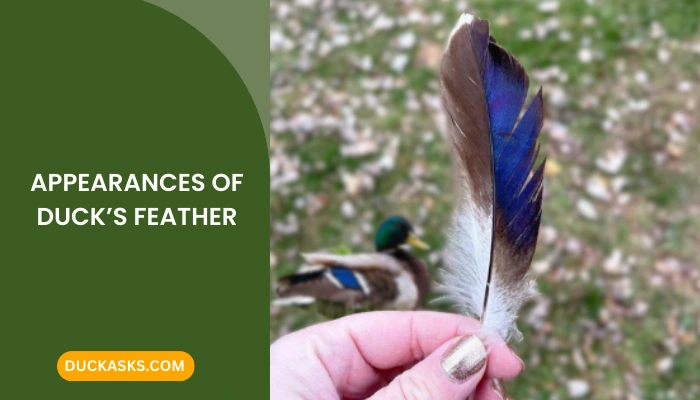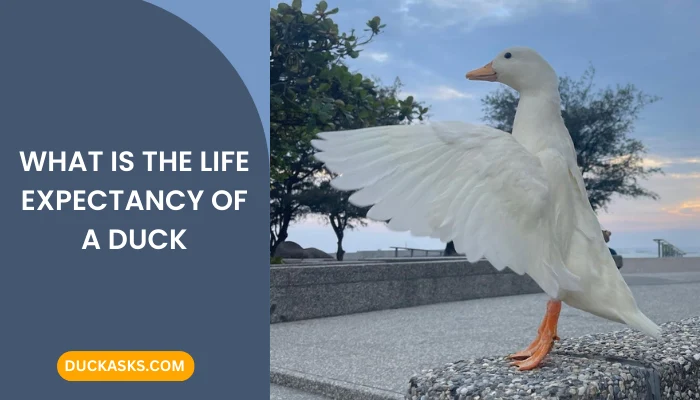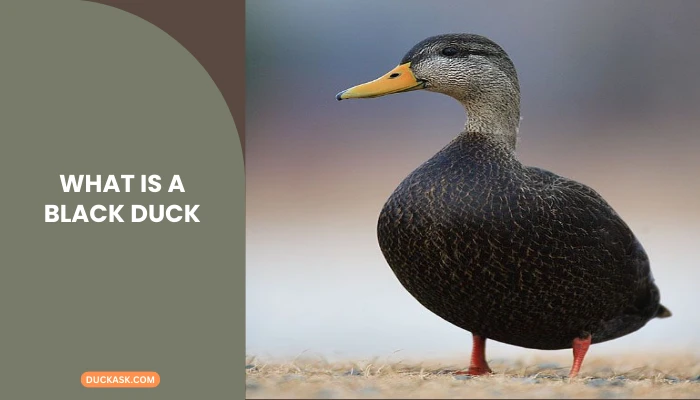What Can We Learn From Duck Feathers?
Distinctive to birds and their dinosaur ancestors, feathers play a vital role in ducks for many reasons, and they even come in various colors and outlines. So, what can we learn from duck feathers?
Feathers are “the most” essential thing ducks have! Not only does it help them to fly, but even supports them during winter seasons. Moreover, the different types of duck feathers supports different important purposes (discussed later in the blog). That’s not all; you can make ornaments and pillow stuffing with these feathers too!
Want to know more of such interesting facts on duck feathers? Well, then binge till the very end of this blog.
Looking For More Duck Blogs:
The Types of Ducks Feathers, Their Ideal Temperature, and More!
Here in this section, we’ve shortlisted all the different duck feathers types and will even let you know how these feathers help these ducks. So, don’t skip any of the following sections.
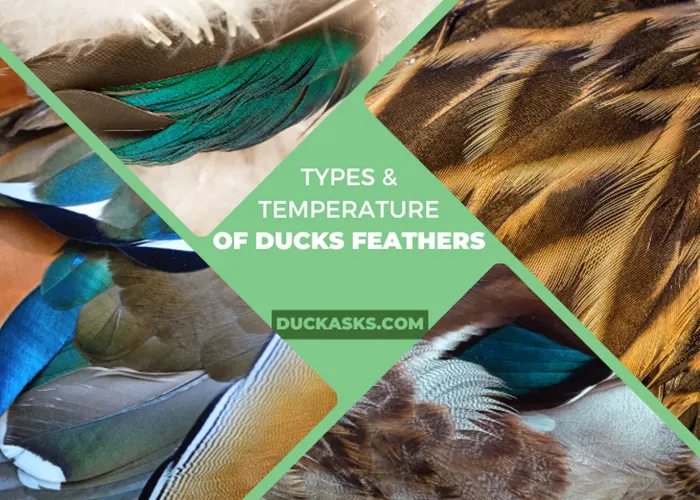
01. Flight Feathers
Such feathers are also called remiges ( Wing Feathers ) which include primaries, secondaries, and tertials. Such feathers look stiff and asymmetrically shaped but paired on the bird’s wings or in the tail.
- Primary Feathers: These are the largest of the Flight Feathers and let the bird fly in the air. They are attached to the wing’s skin on the hand of the bird and farthest from the body. That’s not all; there are ten primary feathers on each wing which aids them in flying better and more smoothly.
- Secondary Feathers: The feathers run along with the arm of the wing and aids the bird while flying in the air and boosting them to fly smoothly. Several studies state that if some of the secondaries are removed, the duck can not fly anymore.
- Tertiary Feathers: Basically, these feathers are on the upper arm of the bird. Birds have short and innermost feathers on the rear edge of the wing.; not as important as the primary and secondary feathers of the bird.
02. Contour Feathers
This feather gives the bird an overall better shape. Moreover, to help their contour feathers revolt against water, they use oil from the uropygial gland at the base of the tail. Aiding in thermoregulation and streamlining the body during the flight. These feathers are made of remiges (wing feathers) and rectrices (tail feathers).
03. Down Feathers
Closest to the birds’ skin, down feathers are made of a soft coating of feathers essentially in the chest region and belly regions. These feathers don’t have quills which is why it is highly valued in the markets and are found under the contour feathers in adults.
04. Filoplumes Feathers
They look roughly like a beaker, the muppet. These feathers are like once in a blue moon, very least visible, and some few countable soft barbs near the tip.
05. Temperature
Ducklings can survive up to 80-90 degrees. Moreover, ducks and geese can survive at 107.5 degrees. They can get frostbite below 20-25 degrees on their feet, and amputation can occur. Ducks are highly equipped with natural insulation in their bodies to help prevent cold or extreme temperatures.
They have this so-called scientific name, “counter-current blood system,” which enables them to synchronize their body temperature and also aids them in surviving extreme cold weather.
06. Ducks Replacing Their Worn – Out Feathers At-Least Twice a Year
Ducks molt all their flight feathers at once a year in general. They can not move or fly outside for a month because of their feathers and get unguarded by carnivores.
What Is Special About Duck Feathers?
They have an exceptional gland positioned near their tails known as the preen gland. This generates oil that the ducks rub all over their feathers.
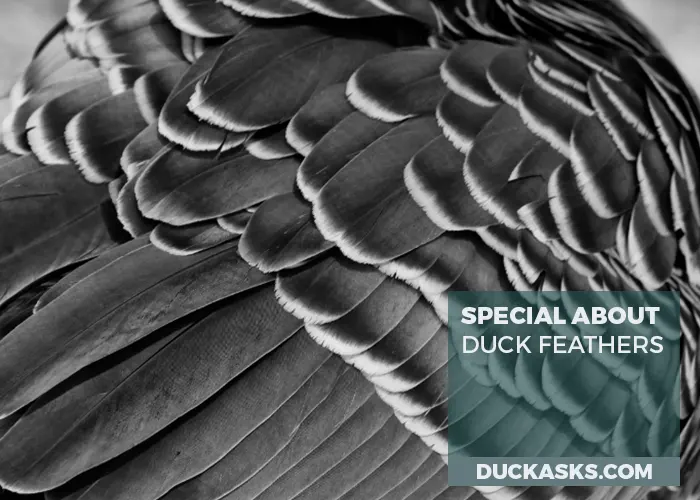
As a result, it builds a strong and helpful fence for the birds; thus, the feathers are waterproofed to the oils. They also spend time washing and cleaning their feathers.
That’s not all; Female ducks mates with male ducks because of their beautiful colored feathers.
You can read more about duck feathers:
- What Do Duck Feathers Look Like?
- What Feathers Do You Clip On A Duck?
- What Do Ducks Look Like without Feathers?
- What Do Ducks Have Under Their Feathers?
- What is Wet Feather in Ducks?
What Are Duck Feathers Made of?
Duck feathers are made of Keratin, a fiber, and a certain protein owned by scleroprotein. Several groups originated in the name of beaks, claws, hooves, nails, and also hairs of animals.
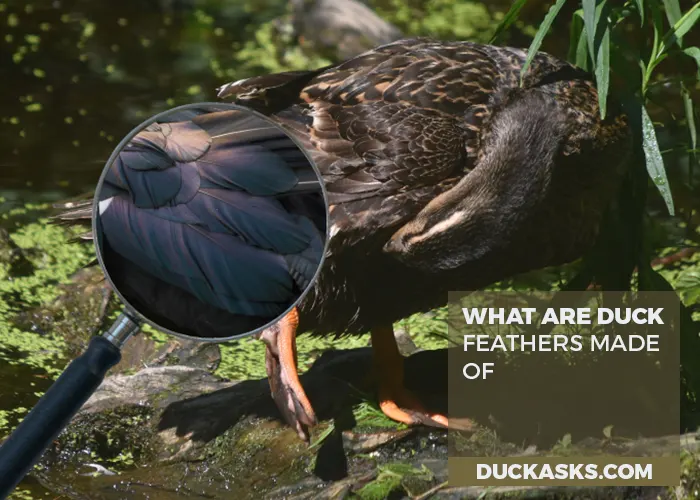
What Can You Make Out of Duck Feathers?
Feathers are used to make many beautiful and amazing things, such as:
- Bird ornaments
- Feather fans
- Earrings
- Masks
- Boas
- Paper
- Plastic
- Pillow stuffing
Feather fiber has familiar things with cellulose, a kind of starch that forms wood and paper. As per studies, feathers are made of Keratin, like wool, and the fiber can absorb more moisture than cellulose fiber.
What Lesson Do We Learn from Wild Ducks?
There are certain rules and regulations for them which they follow more. Wild ducks trust their leaders more and don’t get that friendly with them.
Moreover, they don’t leave their group, and loyalty is a major aspect of ducks. This is because ducks feel safer traveling in groups rather than traveling alone.
Closing Words
There are quite essential facts that we can learn from duck feathers, and most importantly, you produce numerous objects like ornaments and many more.
Despite this fact, duck feathers are more important because these feathers are the one and only thing that end support ducks for their functioning.
So, hopefully, you all enjoyed reading this article so far, and we hope you got the right information from here. We will exceptionally cherish you if you share this content and stay connected with us on Facebook, Pinterest, and Twitter.
Article Reference:
- https://royalsociety.org/blog/2017/08/how-are-duck-feathers-so-brightly-coloured/
- https://academy.allaboutbirds.org/feathers-article/
- https://www.science.gov/topicpages/d/duck+feather+keratin.html
Image Credit:
- https://canva.com/photos



